Gholamreza Anbarjafari
Responsible AI: Gender bias assessment in emotion recognition
Mar 21, 2021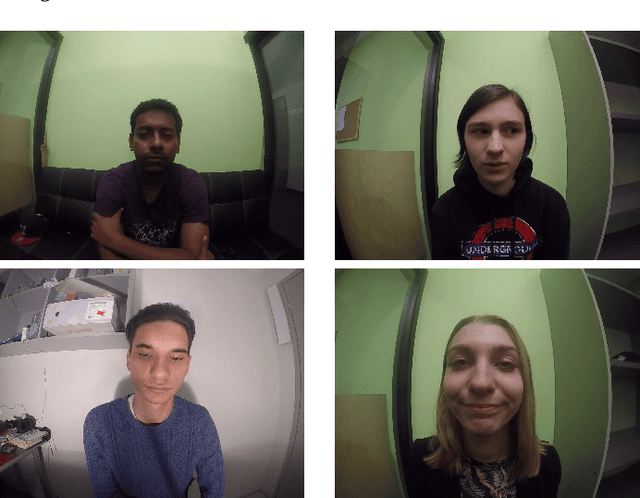
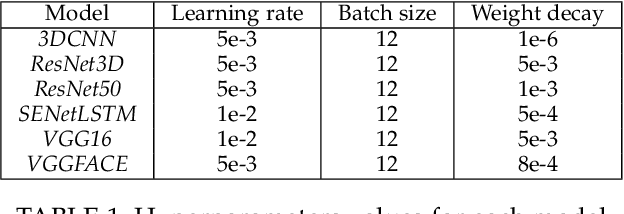
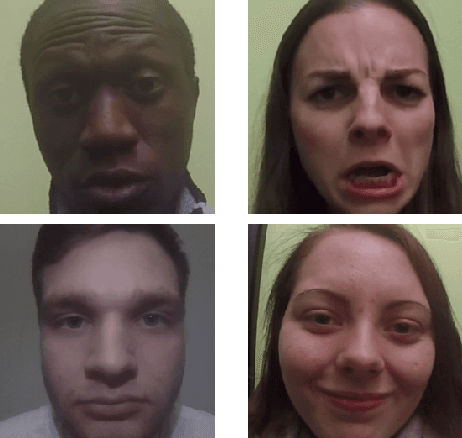
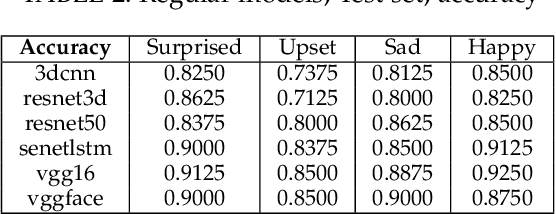
Abstract:Rapid development of artificial intelligence (AI) systems amplify many concerns in society. These AI algorithms inherit different biases from humans due to mysterious operational flow and because of that it is becoming adverse in usage. As a result, researchers have started to address the issue by investigating deeper in the direction towards Responsible and Explainable AI. Among variety of applications of AI, facial expression recognition might not be the most important one, yet is considered as a valuable part of human-AI interaction. Evolution of facial expression recognition from the feature based methods to deep learning drastically improve quality of such algorithms. This research work aims to study a gender bias in deep learning methods for facial expression recognition by investigating six distinct neural networks, training them, and further analysed on the presence of bias, according to the three definition of fairness. The main outcomes show which models are gender biased, which are not and how gender of subject affects its emotion recognition. More biased neural networks show bigger accuracy gap in emotion recognition between male and female test sets. Furthermore, this trend keeps for true positive and false positive rates. In addition, due to the nature of the research, we can observe which types of emotions are better classified for men and which for women. Since the topic of biases in facial expression recognition is not well studied, a spectrum of continuation of this research is truly extensive, and may comprise detail analysis of state-of-the-art methods, as well as targeting other biases.
Ensemble approach for detection of depression using EEG features
Mar 07, 2021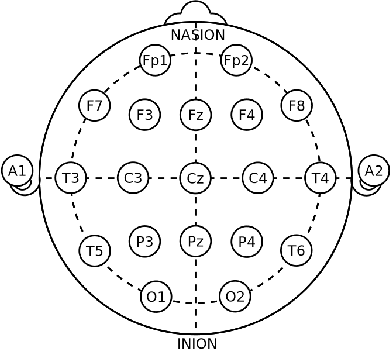
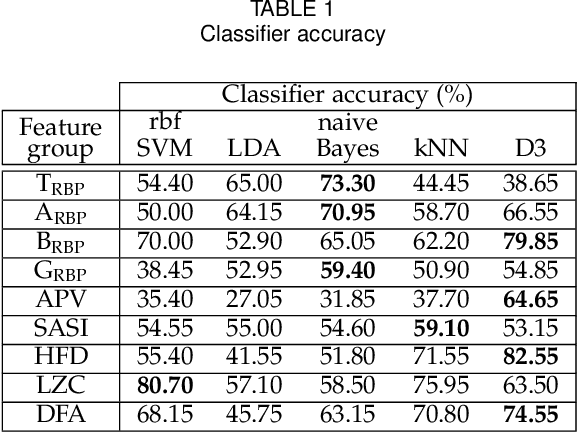
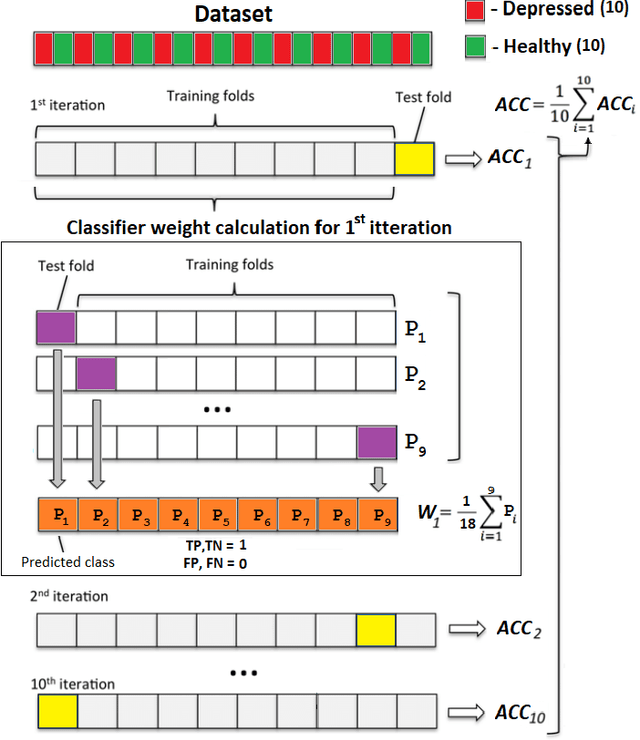
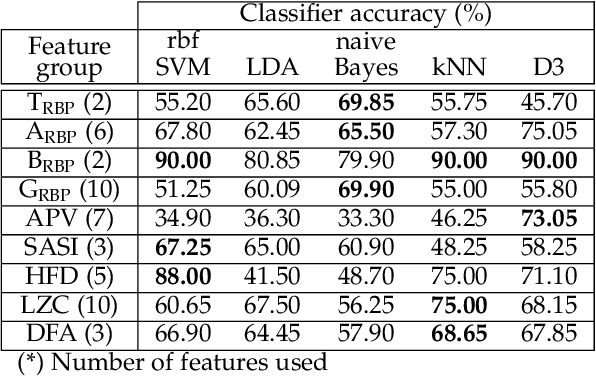
Abstract:Depression is a public health issue which severely affects one's well being and cause negative social and economic effect for society. To rise awareness of these problems, this publication aims to determine if long lasting effects of depression can be determined from electoencephalographic (EEG) signals. The article contains accuracy comparison for SVM, LDA, NB, kNN and D3 binary classifiers which were trained using linear (relative band powers, APV, SASI) and non-linear (HFD, LZC, DFA) EEG features. The age and gender matched dataset consisted of 10 healthy subjects and 10 subjects with depression diagnosis at some point in their lifetime. Several of the proposed feature selection and classifier combinations reached accuracy of 90% where all models where evaluated using 10-fold cross validation and averaged over 100 repetitions with random sample permutations.
ChaLearn Looking at People: IsoGD and ConGD Large-scale RGB-D Gesture Recognition
Jul 29, 2019
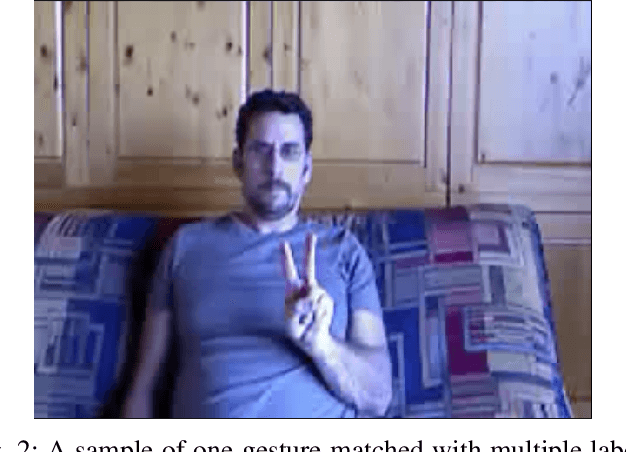

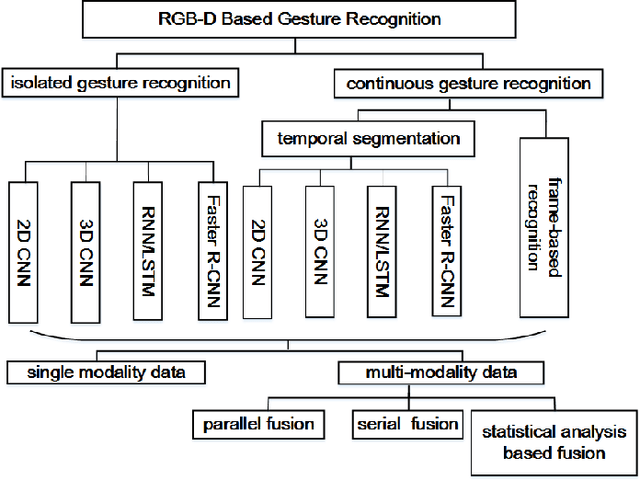
Abstract:The ChaLearn large-scale gesture recognition challenge has been run twice in two workshops in conjunction with the International Conference on Pattern Recognition (ICPR) 2016 and International Conference on Computer Vision (ICCV) 2017, attracting more than $200$ teams round the world. This challenge has two tracks, focusing on isolated and continuous gesture recognition, respectively. This paper describes the creation of both benchmark datasets and analyzes the advances in large-scale gesture recognition based on these two datasets. We discuss the challenges of collecting large-scale ground-truth annotations of gesture recognition, and provide a detailed analysis of the current state-of-the-art methods for large-scale isolated and continuous gesture recognition based on RGB-D video sequences. In addition to recognition rate and mean jaccard index (MJI) as evaluation metrics used in our previous challenges, we also introduce the corrected segmentation rate (CSR) metric to evaluate the performance of temporal segmentation for continuous gesture recognition. Furthermore, we propose a bidirectional long short-term memory (Bi-LSTM) baseline method, determining the video division points based on the skeleton points extracted by convolutional pose machine (CPM). Experiments demonstrate that the proposed Bi-LSTM outperforms the state-of-the-art methods with an absolute improvement of $8.1\%$ (from $0.8917$ to $0.9639$) of CSR.
On the effect of age perception biases for real age regression
Feb 20, 2019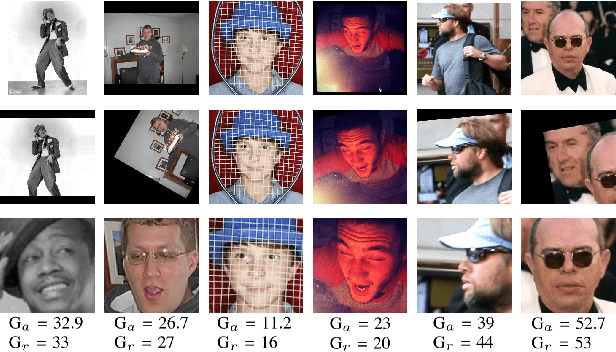
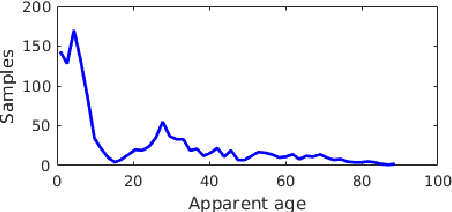
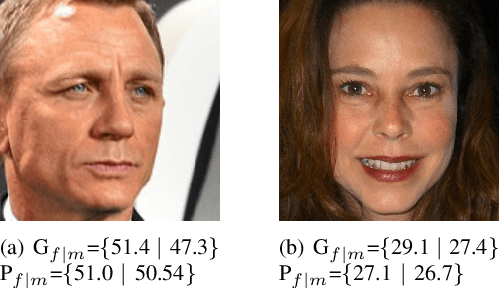

Abstract:Automatic age estimation from facial images represents an important task in computer vision. This paper analyses the effect of gender, age, ethnic, makeup and expression attributes of faces as sources of bias to improve deep apparent age prediction. Following recent works where it is shown that apparent age labels benefit real age estimation, rather than direct real to real age regression, our main contribution is the integration, in an end-to-end architecture, of face attributes for apparent age prediction with an additional loss for real age regression. Experimental results on the APPA-REAL dataset indicate the proposed network successfully take advantage of the adopted attributes to improve both apparent and real age estimation. Our model outperformed a state-of-the-art architecture proposed to separately address apparent and real age regression. Finally, we present preliminary results and discussion of a proof of concept application using the proposed model to regress the apparent age of an individual based on the gender of an external observer.
A Study of Language and Classifier-independent Feature Analysis for Vocal Emotion Recognition
Nov 14, 2018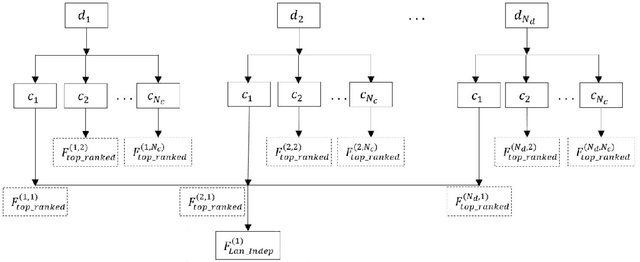

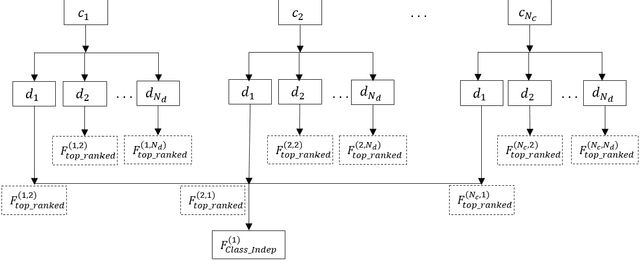

Abstract:Every speech signal carries implicit information about the emotions, which can be extracted by speech processing methods. In this paper, we propose an algorithm for extracting features that are independent from the spoken language and the classification method to have comparatively good recognition performance on different languages independent from the employed classification methods. The proposed algorithm is composed of three stages. In the first stage, we propose a feature ranking method analyzing the state-of-the-art voice quality features. In the second stage, we propose a method for finding the subset of the common features for each language and classifier. In the third stage, we compare our approach with the recognition rate of the state-of-the-art filter methods. We use three databases with different languages, namely, Polish, Serbian and English. Also three different classifiers, namely, nearest neighbour, support vector machine and gradient descent neural network, are employed. It is shown that our method for selecting the most significant language-independent and method-independent features in many cases outperforms state-of-the-art filter methods.
From 2D to 3D Geodesic-based Garment Matching
Sep 21, 2018

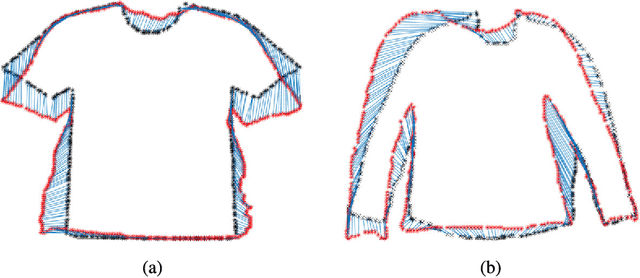

Abstract:A new approach for 2D to 3D garment retexturing is proposed based on Gaussian mixture models and thin plate splines (TPS). An automatically segmented garment of an individual is matched to a new source garment and rendered, resulting in augmented images in which the target garment has been retextured by using the texture of the source garment. We divide the problem into garment boundary matching based on Gaussian mixture models and then interpolate inner points using surface topology extracted through geodesic paths, which leads to a more realistic result than standard approaches. We evaluated and compared our system quantitatively by mean square error (MSE) and qualitatively using the mean opinion score (MOS), showing the benefits of the proposed methodology on our gathered dataset.
Doubly Attentive Transformer Machine Translation
Jul 30, 2018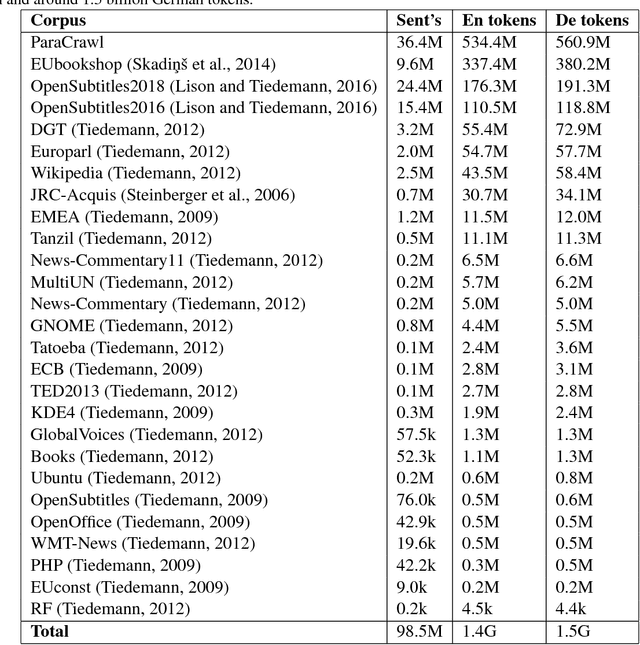
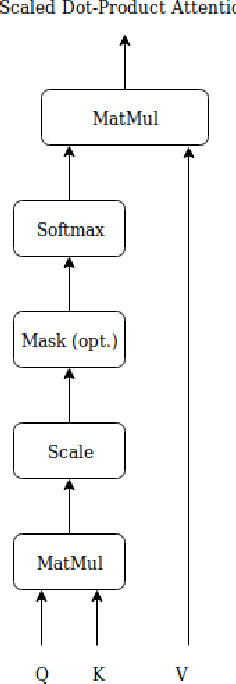
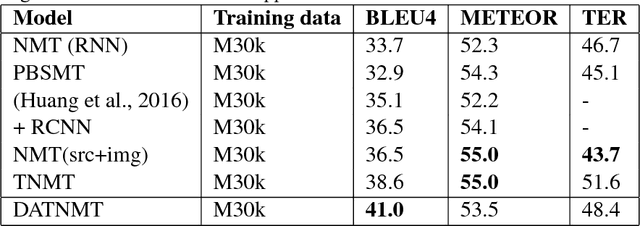
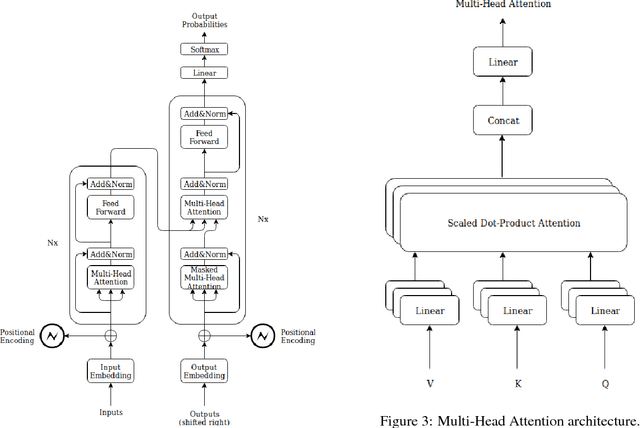
Abstract:In this paper a doubly attentive transformer machine translation model (DATNMT) is presented in which a doubly-attentive transformer decoder normally joins spatial visual features obtained via pretrained convolutional neural networks, conquering any gap between image captioning and translation. In this framework, the transformer decoder figures out how to take care of source-language words and parts of an image freely by methods for two separate attention components in an Enhanced Multi-Head Attention Layer of doubly attentive transformer, as it generates words in the target language. We find that the proposed model can effectively exploit not just the scarce multimodal machine translation data, but also large general-domain text-only machine translation corpora, or image-text image captioning corpora. The experimental results show that the proposed doubly-attentive transformer-decoder performs better than a single-decoder transformer model, and gives the state-of-the-art results in the English-German multimodal machine translation task.
3D Scanning: A Comprehensive Survey
Jan 24, 2018
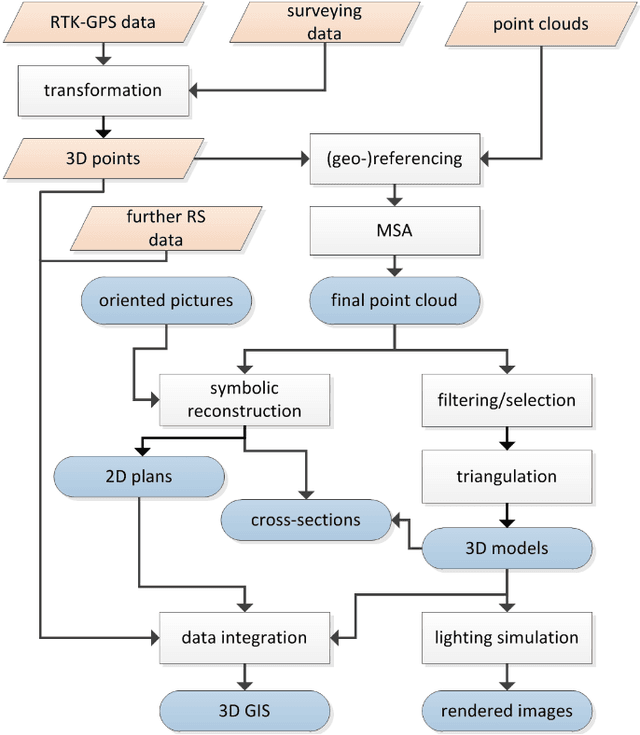
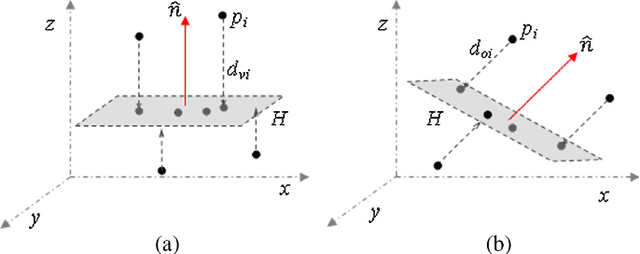

Abstract:This paper provides an overview of 3D scanning methodologies and technologies proposed in the existing scientific and industrial literature. Throughout the paper, various types of the related techniques are reviewed, which consist, mainly, of close-range, aerial, structure-from-motion and terrestrial photogrammetry, and mobile, terrestrial and airborne laser scanning, as well as time-of-flight, structured-light and phase-comparison methods, along with comparative and combinational studies, the latter being intended to help make a clearer distinction on the relevance and reliability of the possible choices. Moreover, outlier detection and surface fitting procedures are discussed concisely, which are necessary post-processing stages.
Survey on Emotional Body Gesture Recognition
Jan 23, 2018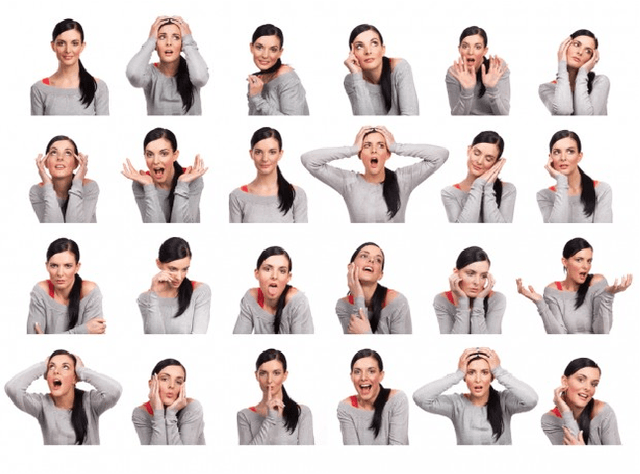
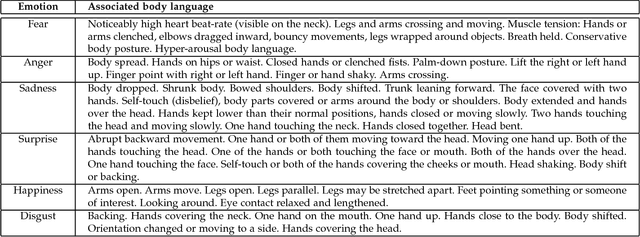
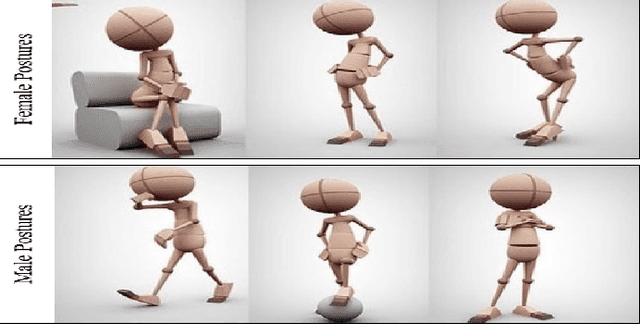

Abstract:Automatic emotion recognition has become a trending research topic in the past decade. While works based on facial expressions or speech abound, recognizing affect from body gestures remains a less explored topic. We present a new comprehensive survey hoping to boost research in the field. We first introduce emotional body gestures as a component of what is commonly known as "body language" and comment general aspects as gender differences and culture dependence. We then define a complete framework for automatic emotional body gesture recognition. We introduce person detection and comment static and dynamic body pose estimation methods both in RGB and 3D. We then comment the recent literature related to representation learning and emotion recognition from images of emotionally expressive gestures. We also discuss multi-modal approaches that combine speech or face with body gestures for improved emotion recognition. While pre-processing methodologies (e.g. human detection and pose estimation) are nowadays mature technologies fully developed for robust large scale analysis, we show that for emotion recognition the quantity of labelled data is scarce, there is no agreement on clearly defined output spaces and the representations are shallow and largely based on naive geometrical representations.
Automatic Recognition of Facial Displays of Unfelt Emotions
Jan 09, 2018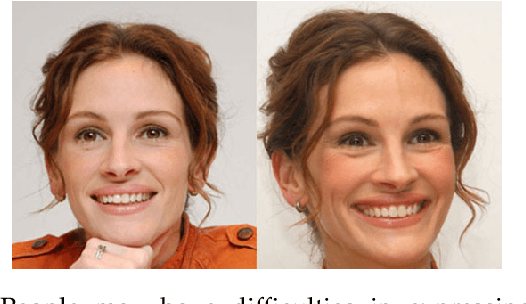
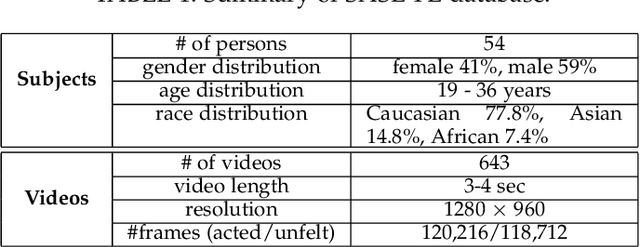
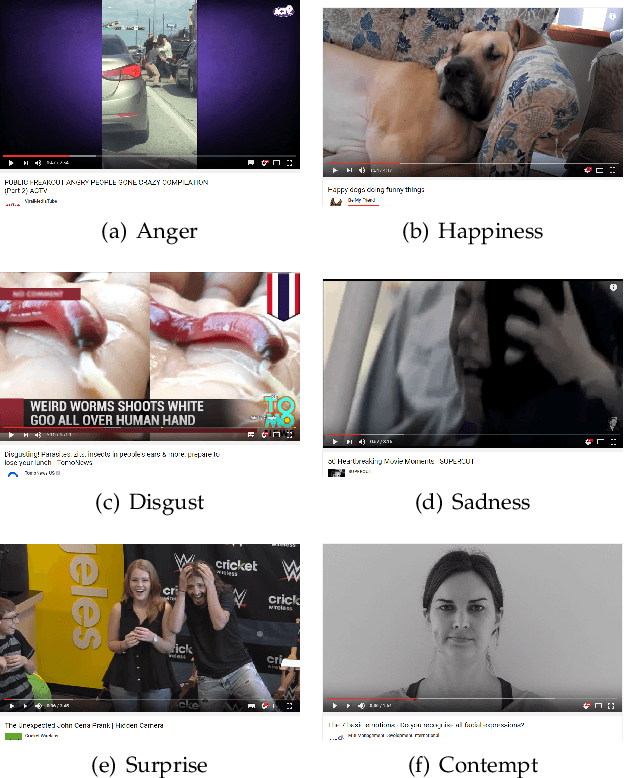
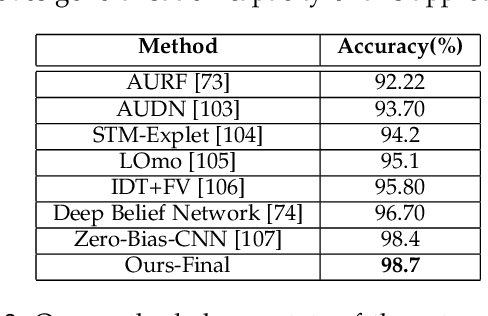
Abstract:Humans modify their facial expressions in order to communicate their internal states and sometimes to mislead observers regarding their true emotional states. Evidence in experimental psychology shows that discriminative facial responses are short and subtle. This suggests that such behavior would be easier to distinguish when captured in high resolution at an increased frame rate. We are proposing SASE-FE, the first dataset of facial expressions that are either congruent or incongruent with underlying emotion states. We show that overall the problem of recognizing whether facial movements are expressions of authentic emotions or not can be successfully addressed by learning spatio-temporal representations of the data. For this purpose, we propose a method that aggregates features along fiducial trajectories in a deeply learnt space. Performance of the proposed model shows that on average it is easier to distinguish among genuine facial expressions of emotion than among unfelt facial expressions of emotion and that certain emotion pairs such as contempt and disgust are more difficult to distinguish than the rest. Furthermore, the proposed methodology improves state of the art results on CK+ and OULU-CASIA datasets for video emotion recognition, and achieves competitive results when classifying facial action units on BP4D datase.
 Add to Chrome
Add to Chrome Add to Firefox
Add to Firefox Add to Edge
Add to Edge